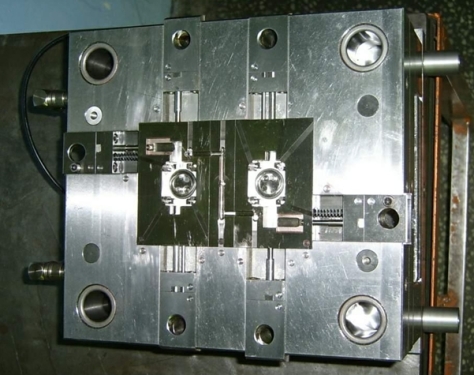 The mold design and manufacturing industry is currently undergoing significant changes, driven by the need for greater product variety, faster updates, and intense market competition. To meet the growing demand for shorter lead times, higher precision, and lower costs, the industry is evolving rapidly, with several key trends shaping its future.
First, mold design is moving away from traditional experience-based methods toward more advanced theoretical calculations and computer-aided design (CAD/CAM/CAE). These technologies not only improve the structural efficiency of molds but also enhance machining accuracy, reduce design time, and streamline the development process.
Second, there's a clear shift toward high-precision large-scale and ultra-small molds. Over the past decade, precision has improved dramatically, from 5 microns to 2–3 microns, with expectations of reaching 1 micron in the near future. This level of accuracy requires advanced finishing techniques and less manual intervention.
Third, multifunctional composite molds are becoming more common, especially those that support multi-color and multi-material injection molding. These molds help shorten production and assembly cycles, making them ideal for diverse applications across industries.
Fourth, hot runner technology is gaining traction in plastic mold manufacturing. It improves productivity, enhances part quality, and reduces material waste, making it a popular choice in many developed countries.
Fifth, gas-assisted molding and high-pressure injection molding are being increasingly adopted. These processes help achieve better dimensional and surface accuracy, while also reducing material usage and production costs. The use of gas-assisted technology allows for more complex shapes and better structural integrity.
Sixth, the standardization of mold components is on the rise. Standard parts like ejector pins, screws, and springs are improving efficiency, reducing costs, and enhancing overall mold quality.
Seventh, rapid and economical mold production is becoming essential in today’s fast-paced, small-batch manufacturing environment. New materials and techniques, such as superplastic forming and epoxy-based molds, are enabling quicker and more cost-effective solutions.
Eighth, the demand for die-casting molds is increasing due to the rise in lightweight products like vehicles and motors. This trend demands molds that are both more durable and more complex.
Ninth, with the continued substitution of steel and wood by plastics, the role of plastic molds is expanding. As mechanical components become more intricate, the need for high-precision plastic molds will only grow.
Finally, the technical complexity of molds is rising, leading to a higher proportion of medium- and high-end molds in the market.
In conclusion, the mold industry is full of potential and innovation. For professionals in this field, staying updated and continuously learning is crucial. Let’s work together to drive the growth and advancement of the mold industry.
The mold design and manufacturing industry is currently undergoing significant changes, driven by the need for greater product variety, faster updates, and intense market competition. To meet the growing demand for shorter lead times, higher precision, and lower costs, the industry is evolving rapidly, with several key trends shaping its future.
First, mold design is moving away from traditional experience-based methods toward more advanced theoretical calculations and computer-aided design (CAD/CAM/CAE). These technologies not only improve the structural efficiency of molds but also enhance machining accuracy, reduce design time, and streamline the development process.
Second, there's a clear shift toward high-precision large-scale and ultra-small molds. Over the past decade, precision has improved dramatically, from 5 microns to 2–3 microns, with expectations of reaching 1 micron in the near future. This level of accuracy requires advanced finishing techniques and less manual intervention.
Third, multifunctional composite molds are becoming more common, especially those that support multi-color and multi-material injection molding. These molds help shorten production and assembly cycles, making them ideal for diverse applications across industries.
Fourth, hot runner technology is gaining traction in plastic mold manufacturing. It improves productivity, enhances part quality, and reduces material waste, making it a popular choice in many developed countries.
Fifth, gas-assisted molding and high-pressure injection molding are being increasingly adopted. These processes help achieve better dimensional and surface accuracy, while also reducing material usage and production costs. The use of gas-assisted technology allows for more complex shapes and better structural integrity.
Sixth, the standardization of mold components is on the rise. Standard parts like ejector pins, screws, and springs are improving efficiency, reducing costs, and enhancing overall mold quality.
Seventh, rapid and economical mold production is becoming essential in today’s fast-paced, small-batch manufacturing environment. New materials and techniques, such as superplastic forming and epoxy-based molds, are enabling quicker and more cost-effective solutions.
Eighth, the demand for die-casting molds is increasing due to the rise in lightweight products like vehicles and motors. This trend demands molds that are both more durable and more complex.
Ninth, with the continued substitution of steel and wood by plastics, the role of plastic molds is expanding. As mechanical components become more intricate, the need for high-precision plastic molds will only grow.
Finally, the technical complexity of molds is rising, leading to a higher proportion of medium- and high-end molds in the market.
In conclusion, the mold industry is full of potential and innovation. For professionals in this field, staying updated and continuously learning is crucial. Let’s work together to drive the growth and advancement of the mold industry.Clinching Nut,Hex Rivet Nut,Self Clinching Rivet Nut,Rivet Nuts Screwfix,Rivet Nut
Dongguan Tiloo Industrial Co., Ltd , https://www.sales-fastener.com